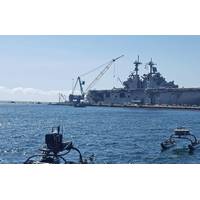
New ASV Delivered to the US Navy
;WAM-V stability and portability are unmatched and together with NIWC and our industry partners, we demonstrated the multi-domain (air, surface and subsurface) capabilities of the WAM-V during the Citadel Protect Autonomous Security Demo at NAVBASE San Diego where we launched a Teledyne Seabotix ROV and a Planck Aerosystems UAV,” said Mark Gundersen, president and CEO of Marine Advanced Robotics. “We have continued to develop the multi-domain functionality of the WAM-V platform and we are excited that NIWC will be advancing this capability for U.S. Navy mission needs.”Related: A System
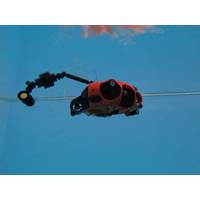
Subsea Tech's 'March of Miniaturization'
by Rever Offshore at a wellhead site as part of an Ashtead Technology Autonomous Monitoring System (AMS+) during a drilling project for Total in the North Sea early in 2019. An ROV could then get data from the AMS+, using LUMA, 8m from the wellhead.Later in 2019, an Alfred Wegener Institute and Max Planck Institute for Marine Microbiology scientific cruise on the research vessel Sonne used LUMA modems on Geomar’s ROV KIEL6000 to directly communicate with subsea instruments, also with LUMA modems, in 4,000m water depth, to ensure that their sensors were working and reconfigure them if necessary

A System of Systems Approach to Mine Countermeasures
, multi-company demonstration began with a Power Docks Blue Isles Autonomous Power Microgrid platform simulating providing power to all vehicles. A Teledyne Oceanscience Z-Boat 1800 RP autonomous surface vessel (ASV), started the exercise by performing a bathymetric and LiDAR survey of the basin. Next, a Planck Aerosystems Shearwater unmanned aerial vehicle (UAV) conducted surface surveillance for both object avoidance and threat mitigation for the Z-Boat. A Teledyne Gavia autonomous underwater vehicle (AUV) then conducted a search-classify-map sidescan survey of the basin. Teledyne CARIS-Onboard, which
Vernadsky Medal for Boetius
The AWI director, deep-sea researcher and Max Planck group leader Prof. Dr. med. Antje Boetius receives the Vernadsky Medal for her seminal contributions in the field of biogeosciences and her outstanding research on methane metabolism and the marine carbon cycle. The Vladimir Ivanovich Vernadsky Medal has been awarded by the European Geosciences Union (EGU) since 2003 in recognition of the scientific achievements of Vernadsky in mineralogy and geochemistry. It honors scientists for their exceptional contributions in the field of biogeosciences. Antje Boetius is the first female award winner.

Unmanned Vehicles In, On and Above the Water
As part of the annual BlueTech Week in San Diego, attendees were given an opportunity to see several unmanned vehicle technologies in action. The main event was put on by a team consisting of Marine Advanced Research, Inc.; Planck Aerosystems, Inc.; and Teledyne Marine, Inc. (all with bases in California). Together, the team demonstrated multi-interoperability among five different unmanned systems on the water, in the air and subsea. A Z-Boat 1800RP unmanned surface vehicle (USV) from Teledyne Oceanscience used Odom MB2 multibeam sonar technology to search for and inspect targets of interest
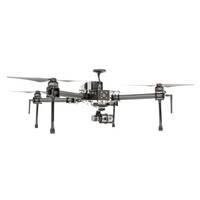
Swathe Services to Represent Planck Aerosystems in the UK
Swathe Services said it has entered into an agency agreement with Planck Aerosystems to represent the San Diego based autonomous drone company in the U.K. Planck Aerosystems is a drone company that enables autonomous operations from moving vehicles on land or at sea. The company’s specialized Shearwater unmanned aerial vehicles (UAVs) can be deployed in a matter of minutes, with minimal user training and experience. With powerful onboard computing capabilities, long range digital communications and intelligent computer vision software the Planck solution provides a safer, faster

SoCal Tech Focus: Planck Aerosystems
Planck Aerosystems builds unmanned aerial systems (UAS) for maritime professionals. Based in San Diego, Planck was founded on the idea that putting an aircraft on every boat would represent a transformational change to maritime industry through improved data acquisition, situational awareness and safety. Planck has built the technology to make the dream of putting a drone on every boat a reality. Founder Josh Wells and lead engineer Allan Matthew conducted a series of technology demonstrations during Oceanology International North America (OINA), held in San Diego February 14-16, 2017. During
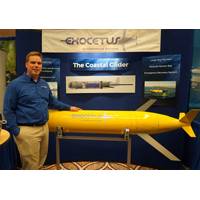
US Blue Tech Companies to Watch in 2017
Corporation, Inc. Assure Controls BioLargo Maritime Solutions Inc. Blue Robotics Inc. Del Mar Oceanographic Exocetus Autonomous Systems GreenWave Instruments Hydronalix Marine Advanced Research Inc. OceanManager Pioneer Valley Renewables Planck Aerosystems PortCall Sunburst Sensors WearWare Inc. The U.S. Maritime Technology Export Initiative is a collaboration between The Maritime Alliance (TMA) and the International Trade Administration (ITA), part of the U.S. Department of Commerce. A team of more than 50 people
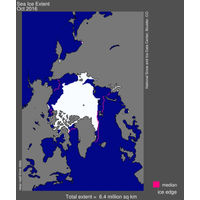
Arctic Sea Ice Retreat Pinned to Individuals' Emissions -Study
meant on average the loss of three square metres of ice in September, when the ice reaches a minimum extent before expanding in winter. That made it possible to "grasp the contribution of personal carbon dioxide emissions to the loss of Arctic sea ice," scientists at Germany's Max Planck Institute for Meteorology and the U.S. National Snow and Ice Data Center wrote in the journal Science. Each passenger taking a return flight from New York to Europe, or driving a gasoline car 4,000 kms, would emit about a tonne of carbon dioxide, they estimated. A long-term retreat



 February 2024
February 2024





